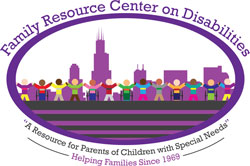Transition from High School to College
Differences Between High School and College for Students with Disabilities
Legal Differences
High School
- Services are provided under IDEA or Section 504, Subpart D.
- The IEP is mandated and followed.
- The student has a right to an education paid for by the state. Therefore, special programs are created to meet students’ needs.
- Parents are actively involved in planning and decisions.
- Accommodations are provided to ensure the success of the student.
- School districts are responsible for identifying and evaluating disability at no cost to the student or family.
- Parents sign documents for students.
- High school personnel talk freely with parents.
College
- Services are provided under ADA and Section 504, Subpart E.
- The high school IEP ends; there is no IEP at the college level.
- A college education is a privilege rather than a right, and special programs are not required.
- Students are considered adults and must advocate for themselves.
- Accommodations are provided to ensure equal access, and success is the responsibility of the student.
- The student must self-identify and provide appropriate and current documentation based on the college’s requirements. The college is not responsible for the payment of evaluations/documentation.
- Students sign all documents (if age 18 or over).
- The Buckley Amendment requires that the student give written permission to college personnel to talk to parents.
